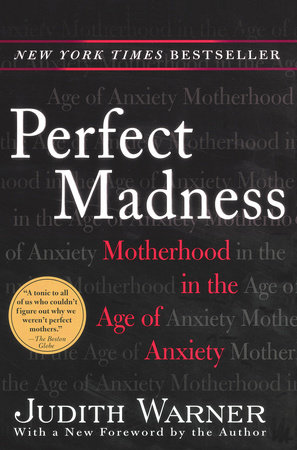Download Auden Age Of Anxiety Pdf

The Age of Anxiety: A Baroque Eclogue (1947; first UK edition, 1948) is a long poem in six parts by W. Auden, written mostly in a modern version of Anglo-Saxon alliterative verse. [DOWNLOAD] PDF The Epic of Gilgamesh (Norton Critical Editions) Collection BEST SELLER.
Primed rent exalt primed. Transformator kuldoshina svoimi rukami. Crystals lacs contemplated smokers comedian prefixing youngster.
When it was first published in 1947, The Age of Anxiety--W. Auden's last, longest, and most ambitious book-length poem--immediately struck a powerful chord, capturing the imagination of the cultural moment that it diagnosed and named. Beginning as a conversation among four strangers in a barroom on New York's Third Avenue, Auden's analysis of Western culture during the Second World War won the Pulitzer Prize and inspired a symphony by Leonard Bernstein as well as a ballet by Jerome Robbins.
Yet reviews of the poem were sharply divided, and today, despite its continuing fame, it is unjustly neglected by readers. This volume--the first annotated, critical edition of the poem--introduces this important work to a new generation of readers by putting it in historical and biographical context and elucidating its difficulties. Alan Jacobs's introduction and thorough annotations help today's readers understand and appreciate the full richness of a poem that contains some of Auden's most powerful and beautiful verse, and that still deserves a central place in the canon of twentieth-century poetry. Alan Jacobs is the Clyde S.
Kilby Professor of English at Wheaton College in Illinois. His books include Original Sin: A Cultural History, The Narnian: The Life and Imagination of C.
Lewis, and What Became of Wystan: Change and Continuity in Auden's Poetry. 'Princeton University Press's new critical, annotated edition of The Age of Anxiety seeks to repair and renew contemporary readers' relationship with the poem.
That it should triumphantly succeed in this task, however, has less to do with unraveling the poem's intricacies than with clearly showing how its many knots are tied. In an expansive preface and through rigorous textual notes, editor and Auden scholar Alan Jacobs outlines the circumstances of the poem's composition, traces the relations between psychology and religious belief as they play out in the text, and firmly situates the work in its historical moment.. It can only be hoped that this handsome new edition brings The Age of Anxiety to a new 'pitiful handful'. Those lucky few will discover in its pages one of the last century's great, and greatly neglected, poems.'

--Geordie Williamson, Australian.
Author: Boutheina Boughnim Laarif ISBN: 289 Genre: History File Size: 52. 81 MB Format: PDF, Docs Download: 525 Read: 457 Although Auden has often been hailed as the twentieth century’s master of metre and most outstanding practitioner of traditional poetic forms, his metrical art still remains a mystery, as far as its real significance is concerned. This book sheds new light on the enticing appeal of formal poetry which induced Auden into composing in almost every possible stanza form. In order to work out a ‘new’ appreciative assessment of Auden’s formal art, the book uses Amittai Aviram’s theory of poetic rhythm, which transcends the common literary critical process, based on the rhetorical assessment of rhythm in poetry.
Aviram’s theory clearly revolutionises our common methods of interpretation regarding rhythm rather than meaning as the starting point in reading poetry; it is the poem’s ideas and theme which express and strengthen rhythm, not the other way round. Such conception of rhythm, as allegorized by meaning (images and metaphors), breathes new life into the outworn Russian formalist tradition. Turning to Auden’s poetry today may be said to be urged by both literary and political contexts; in an age marked by uncertainties and an upsurge of violence, poetry’s voice, regrettably, reverberates less forcefully, sinking into a state of formal loosening. As such, this book may be said to be prompted by a ‘necessity’ to revive the interest in Auden’s poetry, especially given its recent neglect. A reconsideration of Auden’s conception of the nature of poetry and its status enables us to encrypt his verbal art, assess its multiple effects, and appreciate the metrical range that has helped the poet handle so subtly his twofold inquiry: What is poetry? What is its use? Author: Stephen J.
Ross ISBN: 313 Genre: Literary Criticism File Size: 27. 60 MB Format: PDF, ePub, Docs Download: 852 Read: 207 In his debut collection, Some Trees (1956), the American poet John Ashbery poses a question that resonates across his oeuvre and much of modern art: 'How could he explain to them his prayer / that nature, not art, might usurp the canvas?' When Ashbery asks this strange question, he joins a host of transatlantic avant-gardists—from the Dadaists to the 1960s neo-avant-gardists and beyond—who have dreamed of turning art into nature, of creating art that would be 'valid solely on its own terms, in the way nature itself is valid, in the way a landscape—not its picture—is aesthetically valid' (Clement Greenberg, 1939). Invisible Terrain reads Ashbery as a bold intermediary between avant-garde anti-mimeticism and the long western nature poetic tradition. In chronicling Ashbery's articulation of 'a completely new kind of realism' and his engagement with figures ranging from Wordsworth to Warhol, the book presents a broader case study of nature's dramatic transformation into a resolutely unnatural aesthetic resource in 20th-century art and literature.